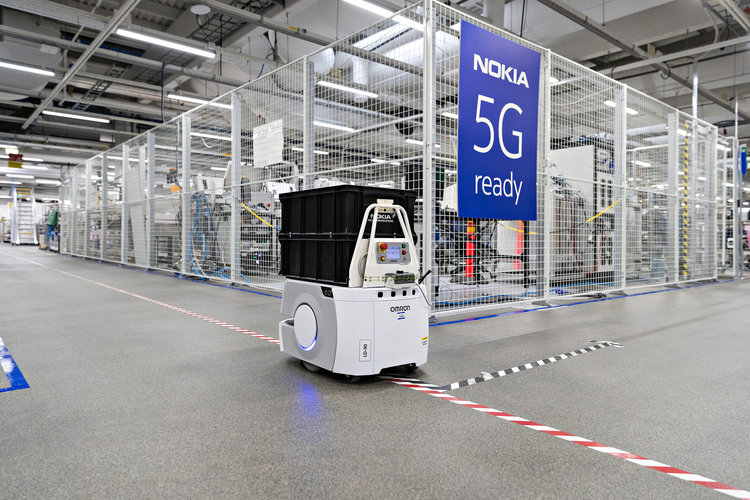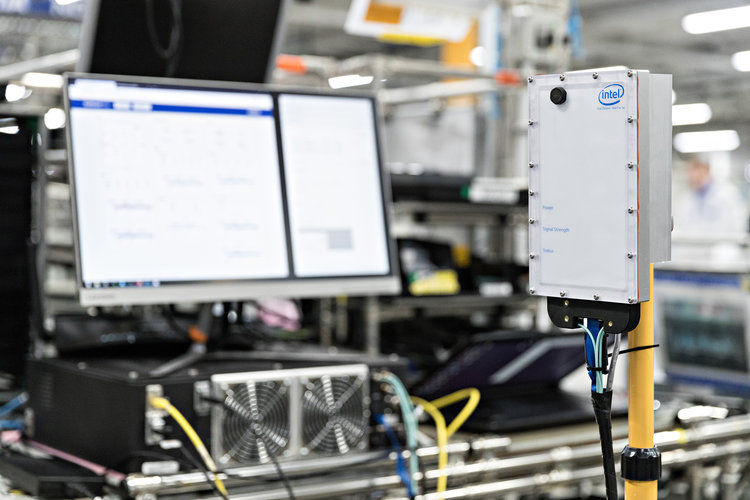Inside the 5G factory: How Nokia's research aids its own production
Nokia's Oulu facility has been involved in every generation of mobile technology

Anyone who visit’s Nokia’s Oulu campus is greeted by a giant sign that simply says, “Home of Radio”, and its clear the company believes the rhetoric.
Nokia’s trials and tribulations in the handset market have been well-documented, but its modern incarnation will play a major role in the development of 5G networks, just as it has for the previous four generations.
Of the company’s 100,000-strong workforce, just 6,000 are still located in Finland thanks to a series of job cuts caused by a dramatic reversal of fortunes in the mobile phone market and the disastrous takeover by Microsoft. Oulu itself was a major casualty of the redundancies.
Half of the remaining 6,000 roles are located at head office in Espoo, with the rest employed in Tampere and here in Oulu.
5G development
Pictures of former president Urho Kekkonen’s visit adorn the corridors of the facility which opened in 1973 and forms part of a wider telecommunications hub in the Oulu area. Indeed, this area, just south of the Arctic Circle, has had a disproportionate impact on the world of mobile.
This is not just because of Nokia, but also the presence of other major tech firms, startups and academics. The city is also host to a live 5G Test Network (5GTN), run by the University of Oulu.
Nokia’s pitch to mobile operators is that it can be an end-to-end provider of 5G equipment, comprising not just radio technology, but products for core networks and fixed connectivity alongside applications, services and deployment assistance
Are you a pro? Subscribe to our newsletter
Sign up to the TechRadar Pro newsletter to get all the top news, opinion, features and guidance your business needs to succeed!
“Our previous slogan was about connecting people, but the current one has been changed to ‘connect the world’,” says Nokia's Olli Linamma, who heads up the 5GTN. “It’s about moving from personalised services for people to machines.
“This location is the home of radio. That’s how we see ourselves.”

New ways of thinking
What’s notable is that the Oulu facility comprises both radio R&D and a base station manufacturing facility. Design and manufacturing are integrated so that Nokia’s 5G products can be tested in the factory and make it more efficient.
“[Head of the factory] Heikki [Romppainen] is our internal customer,” continues Linamma. “We work closely with R&D so when we’re designing the products, we’re also designing how they’re manufactured.”
The reliability, speed and ultra-low latency afforded by 5G networks opens up the possibility of connecting mission critical applications and systems using the Industrial Internet of Things (IIoT).
As a result, 5G networks will need to be significantly denser than previous generations, meaning that equipment must be more compact. To this end, Nokia is reducing the size of its kit by integrating various functions into a single appliance and supporting more standards.
“5G equipment needs to be more powerful,” adds Wolfgang Hasiwar, head of 5G solution architecture. “There is a digital part and a physical part to a base station. 5G is not just about radio, it’s about changing the way we’re doing things.”

Inside the 5G factory
Romppainen says that 99 per cent of the factory is already automated, even packaging, while sensors around the factory measure humidity and temperature to ensure its kit is in optimum condition.
Small autonomous vehicles roam the factory delivering parts and components, while Nokia is even looking at indoor location technology. This is currently used to track the most important pieces of equipment in the factory – 5G products.
Nokia has also virtualised the entire factory to create a ‘Digital Twin’. This allows it to carry out training or simulate changes to its operations using Virtual Reality (VR). VR is also used to show Nokia facilities around the world what a new product looks like and how to assemble it.
“We used this with our summer trainees,” said Romppainen.
The factory not only gives Nokia a chance to test out its innovations, but also serves as a proof of concept to customers – especially a time when the firm is expanding its client base from operators to enterprises too.
Earlier in the week, executives from several major car manufacturers enjoyed a tour of the facility, while Nokia believes its important to show that 5G isn’t just a short-term upgrade but that there needs to be a long-term roadmap.
The first wave of 5G networks will serve mobile operators, offering enhanced mobile broadband speeds. It is the second wave of network technology that enables the ultra-low latency that will be truly transformative, but this isn’t expected to happen until the mid-2020s.
“Our customers need to see we’re not just a company for two more years, but 10-20 years,” concludes Hasiwar. “There are short-term products, but we are investing a lot in the second wave too.”
- Here are the best mobile phone deals for September 2018
Steve McCaskill is TechRadar Pro's resident mobile industry expert, covering all aspects of the UK and global news, from operators to service providers and everything in between. He is a former editor of Silicon UK and journalist with over a decade's experience in the technology industry, writing about technology, in particular, telecoms, mobile and sports tech, sports, video games and media.